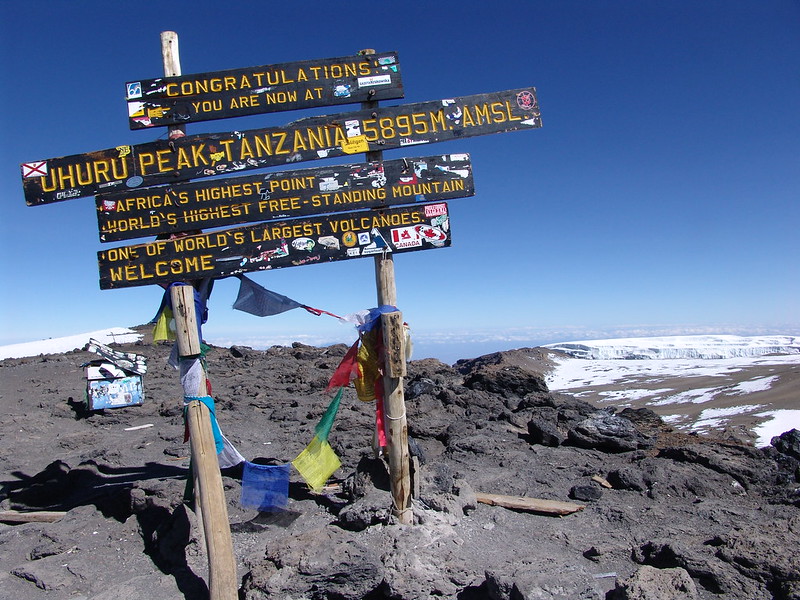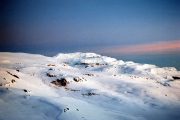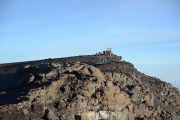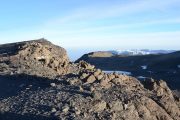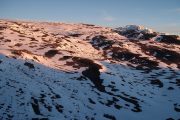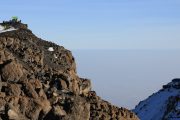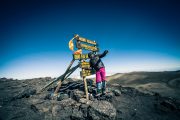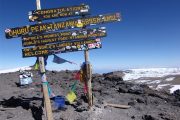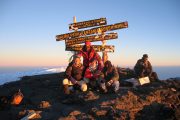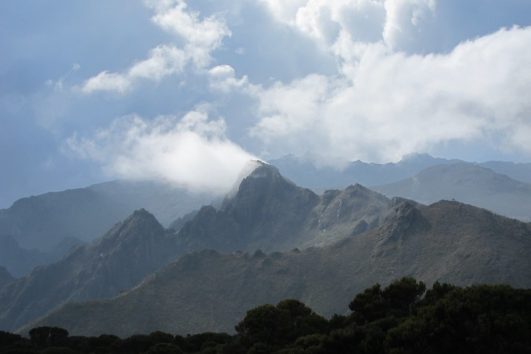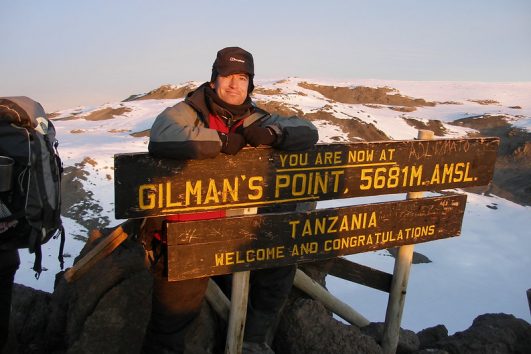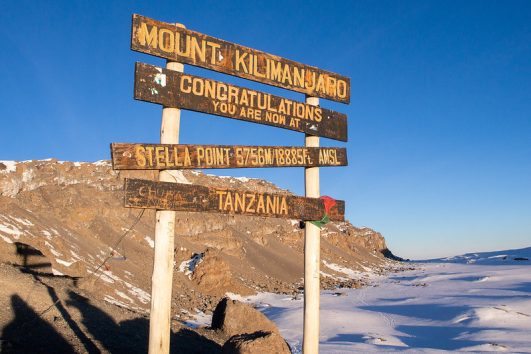Uhuru Peak Elevation / Altitude: 5,895 meters
Uhuru Peak is the summit point of Mount Kilimanjaro, located on Kibo in the arctic zone of Kilimanjaro and at an elevation of 19,341 ft, it is the highest peak in Africa, followed by Batian Peak on Mount Kenya. This summit point is perched on Kibo Peak, one of the three peaks on the mountain that also consists of Kibo, Mawenzi, and Shira. Now, Kibo is the highest peak of the three volcanic peaks that make up this mountain located in Tanzania and since Uhuru Peak is a summit point found on top of this peak, it means that it is the highest point in the African continent. The other summit points on Kilimanjaro apart from Uhuru Peak are Stella Point and Gilman’s Point.
To climb to Uhuru Peak, you may not need any special equipment since it is not a technical peak but you will need warm clothing and climbing gear because the weather is quite chilly, temperatures here fall well below freezing point (20°F or -7°C to -20°F or -29°C) with a landscape surrounded by ice, glaciers, snow and bare rocks. It is usually recommended to spend a brief moment at this summit point as there are heavy winds and thin air even though this area does not have a death zone.
Its name comes from the Swahili word for freedom ‘Uhuru’
The majestic Kilimanjaro is comprised of three main volcanic cones, namely:
- Kibo (5, 895m)
- Mawenzi (5, 149m)
- Shira (3, 962m).
Uhuru Peak located in Kibo’s crater rim is the highest summit that climbers from all over the world attempt to summit Kilimanjaro. Reaching Uhuru peak is every mountain climber’s dream
Standing at a staggering height of 5, 895m, Uhuru Peak holds the title of the highest point in the whole of Africa and second in the world.
This peak also holds the bragging rights of being one of the most sought-after mountain summits in the world.
How to climb Uhuru Peak: Video
In order to climb to Uhuru Peak on Mount Kilimanjaro, you need to be mentally prepared, do at least some training to be in your best form, and follow proper acclimatization rules like drinking enough water, having proper planning to prepare for your climb, getting the correct gear, and making sure you eat energy giving foods while on the mountain. Below is a video showing climbers approaching the summit of Uhuru Peak.
The Uhuru peak Signpost
It is at Uhuru peak that the famous, jauntily angled summit sign is erected. This signpost is where every Mount Kilimanjaro climber takes their victory photograph. At this signpost on Uhuru peak, climbers take all kinds of photographs holding flags, raising hands in jubilation, smiling, and other poses.
The Uhuru peak sign bears the famous words “congratulations, you are now at Uhuru Peak at 5,895 m” This sign is more than just a mere sign, it is a symbol of achievement and relief. —These rustic planks made out of wood have become an icon for mountain climbers all over the world.
In full the wooden signpost at Uhuru Peak reads
- MOUNT KILIMANJARO
- CONGRATULATIONS
- YOU ARE NOW AT
- UHURU PEAK, TANZANIA 5895M/19341FT AMSL
- AFRICA’S HIGHEST POINT
- WORLD’S HIGHEST FREE-STANDING MOUNTAIN
- ONE OF THE WORLD’S LARGEST VOLCANOES
- WORLD HERITAGE AND WONDER OF AFRICA
 Best time to climb to Uhuru Peak
Best time to climb to Uhuru Peak
The best time to climb the mountain to the summit, Uhuru peak is during the dry season months of January, February, July, August, September, and October when it is warm and dry on the mountain.
Uhuru peak Weather & Vegetation Zone
There are no animals or vegetation present at Uhuru peak due to the harsh weather conditions in the area with temperatures falling below zero degrees Celsius, high winds and no rainfall.
The Uhuru peak area is just a vast landscape of pristine white snow and towering peaks.
Mountain climbers go through five different climatic zones before reaching the summit at Uhuru peak.
Uhuru Peak Reviews
Below are some unbiased reviews on our google page from climbers talking about their experience on Uhuru Peak and their ultimate Kilimanjaro journey to the highest peak on Kilimanjaro.
History and origin of the name “Uhuru” Peak.
“Uhuru” is a Swahili word that means freedom. Uhuru peak is part of Tanzania’s (then Tanganyika) history when they were gaining independence from British colonial rule.
On the eve of 8th December 1961, the late Brigadier. Alexander Nyirenda (then army officer) was tasked to erect the Uhuru torch and Tanzania’s national flag on top of Mount Kilimanjaro as an act of celebrating independence.
Simultaneously as the Tanzanian flag was being hoisted at Uhuru peak, the Union Jack (then the flag of Tanganyika) was being lowered at the national stadium as a sign of a change of things in the new Tanzania.
Kaiser Wilhelm Peak
From the past right until about 3 years after gaining independence from the British, Uhuru peak was formerly known as the Kaiser Wilhelm peak, named by German explorer Hans Meyer under the then German colonial rule.
On 06.10.1889 the first climbers of Kilimanjaro Dr. Hans Meyer and Ludwig Purtscheller hoisted the German imperial flag at the then still nameless summit and Meyer as expedition leader called the summit with the right of the first climber “Kaiser-Wilhelm-Spitze”.
Hans Meyer with his comrade-in-arms, the Austrian alpinist Ludwig Purtscheller, officially took possession of the summit for the German Emperor: “I planted a small German flag in my rucksack on the weather-beaten lava summit, cheering three times loudly from Mr. Purtscheller and shouting rejoicing: With the right of the first bidder, I baptize this hitherto unknown, nameless peak of the Kibo, the highest point on African and German soil, with the name: Kaiser-Wilhelm-Spitze 1918 the Zugspitze as the highest mountain in Germany. Wilhelm II received a piece of lava rock from the summit. The Peak had its name changed from Kaiser Wilhelm Peak to Uhuru peak in 1964, three years after Tanzania gained independence.
In place of the flag and torch that was placed on Uhuru peak back in the year 1961, a signpost stands there thanks to the park authorities.
Location of Uhuru peak
Uhuru peak is situated along the crater rim of Mount Kilimanjaro on the Kibo volcanic cone.
The area surrounding Uhuru Peak is covered with temperatures falling even lower at night times.
The high altitude and huge size of the mountain affect gravity on the mountain in such a way that it is difficult to exactly tell which way is up.
The main reason why you need experienced guides and porters to take you to the Uhuru peak is that when you are at the summit you may get lost easily because the peak may not seem like the highest point to you.
Highest Summit on Kibo Peak
The heart of Kilimanjaro is Kibo. Kibo, the highest peak of Kilimanjaro (19,340 ft/ 5,895 m), is crowned by Uhuru Peak. It is here that the conclusion of what we refer to as a “real Kilimanjaro climb” takes place. There are all of the peak camps.
One can witness the renowned Reusch Crater and Ash Pit and Kilimanjaro glaciers in the Kibo crater area.
Barranco Wall, another well-known landmark of Mount Kilimanjaro, is located on Kibo’s southern slope. The view from the peak is nothing short of amazing and is only surpassed by the views from Uhuru Peak itself when Kilimanjaro trekkers pass over it on their route from Barranco Camp to Karanga Camp.
Vegetation and Climatic Zone of the Uhuru peak
Uhuru Peak on Kibo lies in the arctic zone of Mount Kilimanjaro and as you climb to this summit, you pass across many natural zones. The lower slopes range in elevation from 800 to 1800 meters, and residents grow maize, coffee, and bananas in this fertile volcanic soil. Between 1800 and 2800 meters, there is a rainforest zone with abundant precipitation and lovely flowers like Protea Kilimandsharica and Impatients Kilimanjarii.
Between 2800 and 4000 meters is the heath and moorland zone. At night, expect frost, while throughout the day, expect scorching sunlight. The moorland is filled with enormous groundsels. There will be a lot of white-necked ravens around as well. Low precipitation occurs in the high desert, which is 4000 to 5000 meters above sea level. Finally, the summit zone where Uhuru peak is located is almost 5000 meters above sea level and has arctic temperatures at night.
How to get to Uhuru peak
Uhuru Peak can be reached best by trekking because Mount Kilimanjaro is a ‘walkable” mountain. Getting to Uhuru peak can be made possible via a number of routes. These routes vary in the level of difficulty, traffic, and scenic beauty of the surroundings.
The easiest route to get to the Uhuru peaks summit is the Marangu Route and Rongai route while the most difficult routes to climb are the Machame, Shira, and Lemosho routes.
There are approximately 8 routes (including the special permission western breach) that head to Uhuru peak, with most getting there within 5 or 6 days of trekking on foot.
How high is Uhuru Peak?
Uhuru Peak is the highest summit on Kibo’s crater rim. The Tanzania National Parks Authority, a Tanzanian government agency, and the United Nations Educational, Scientific and Cultural Organization list the height of Uhuru Peak as 5,895 m (19,341 ft), based on a British survey in 1952.
Which is the highest peak in Kilimanjaro?
Kilimanjaro is the highest mountain in Africa at 19,341 feet (5,895 meters), but it isn’t a mountain in a traditional sense.
How tall is the Mount Kilimanjaro sign?
How long do you spend at the summit?
The average time spent at the peak is between 15 and 30 minutes, giving you ample time to take in the scenery, take some pictures, have a snack and a drink, and take a break. So that you can potentially reach the peak in time for sunrise, summit day often starts in the middle of the night.
Congratulations, you have reached the highest point in Africa if you make it to Uhuru Peak, which is 5,896 meters high. You won’t be too upset about starting the two-day descent so soon because it will be really chilly that early in the morning.
Is Uhuru Peak the top of Kilimanjaro?
What does the sign say on top of Mount Kilimanjaro?
Where is Uhuru Peak?
How long does it take to hike to Uhuru Peak?
Do you need oxygen to climb Kilimanjaro to Uhuru Peak?
How many kilometers or miles is it to reach to Uhuru Peak?
Which are the best routes to get to Uhuru Peak?
Interesting facts about Uhuru Peak
- If you’re a professional athlete or an experienced climber, you can reach Uhuru Peak from the Kilimanjaro base in less than a day!
- Five of the eight distinct ascent routes to Uhuru Peak are often utilized by people who are climbing Mount Kilimanjaro.
- Uhuru Peak is located atop a volcano that, despite being inactive, has the potential to erupt again in the future.
- Kilimanjaro altitude sickness is the most frequent hurdle to the Uhuru Peak summit attempt. The trek itself isn’t that difficult, though.
- You can locate a book that is enclosed in a wooden box near Uhuru Peak. Visitors are encouraged to put their feelings and ideas in the book once they reach the mountain’s summit.
- Uhuru Peak still has an arctic climate zone despite being just 205 miles (330 km) from the equator where Kilimanjaro’s base is located. It cannot support life for very long. Fore more information about Uhuru Peak, please visit www.uhurupoint.com.

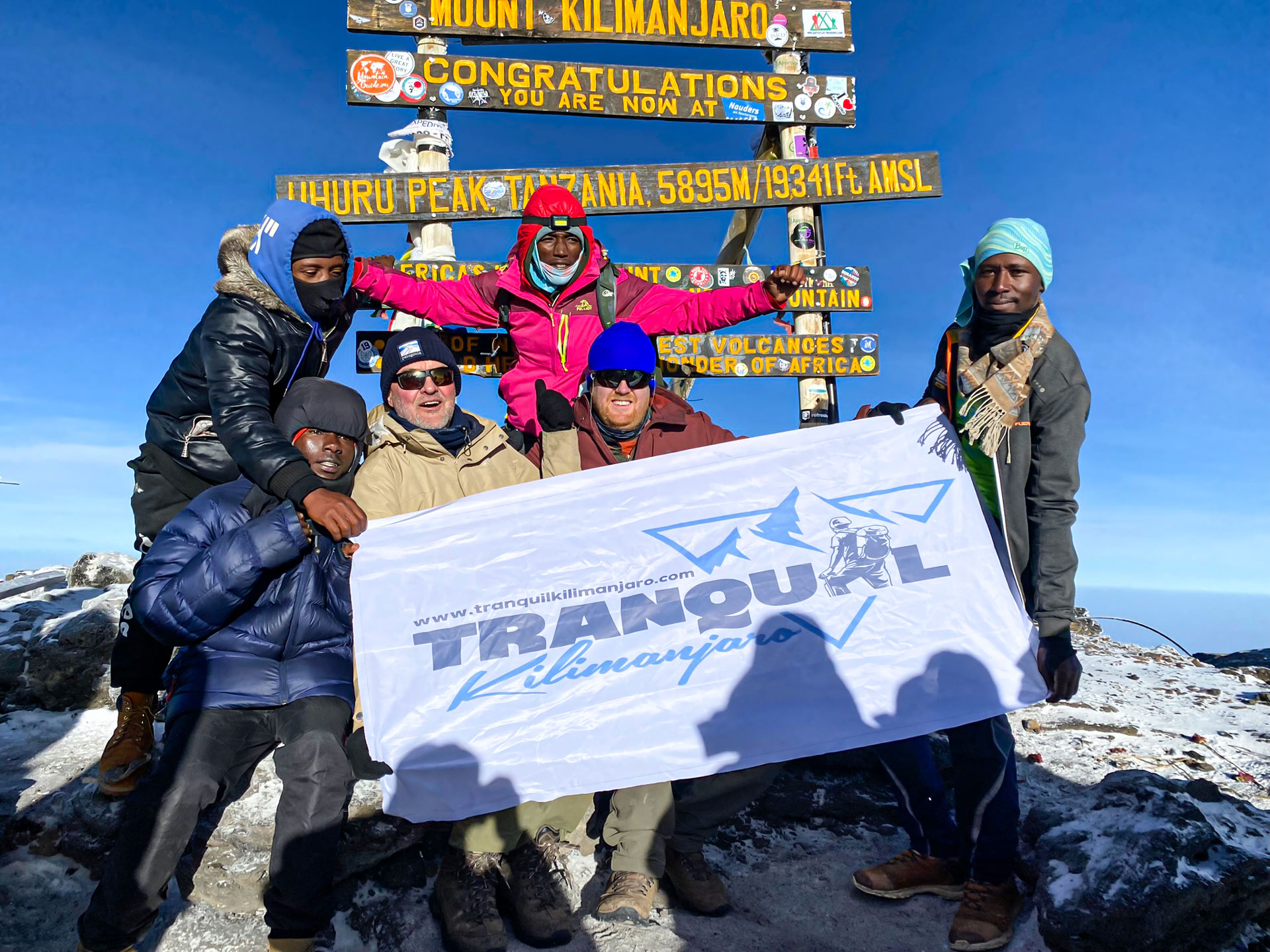
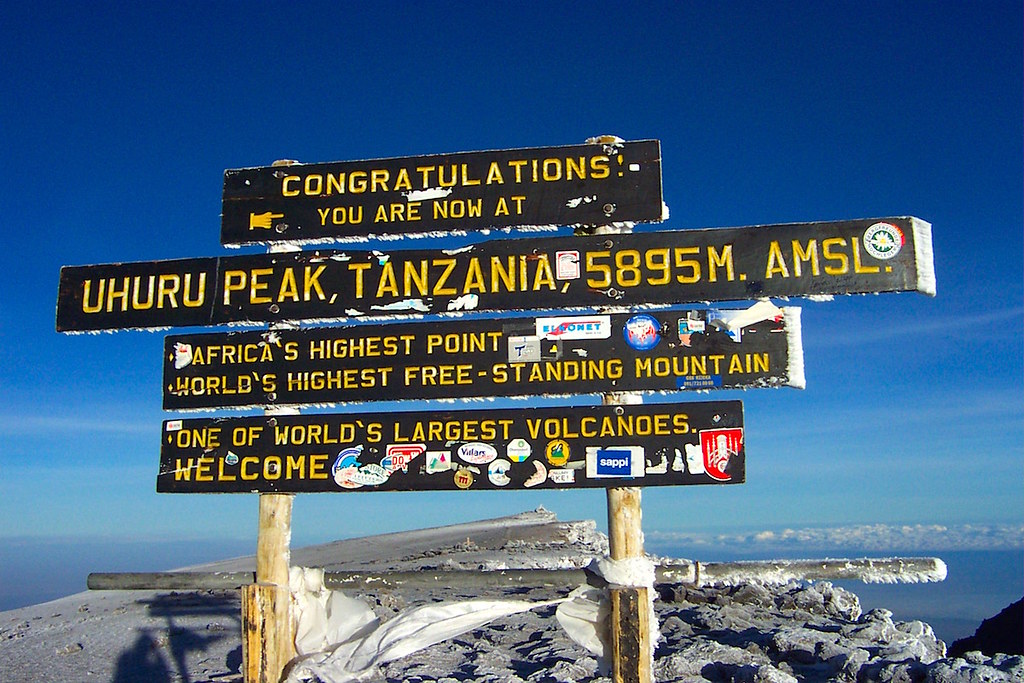 Best time to climb to Uhuru Peak
Best time to climb to Uhuru Peak